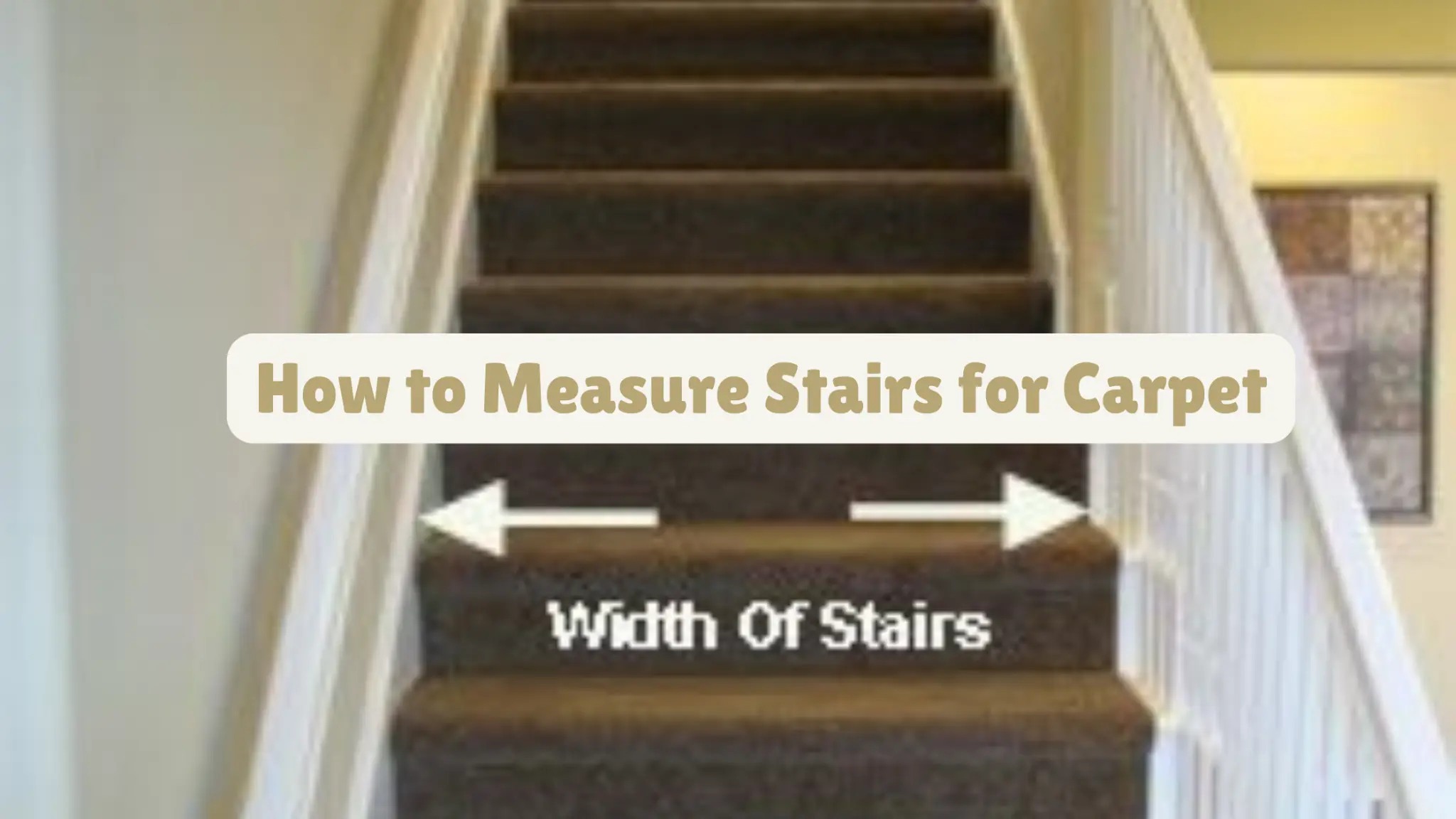How to Measure Stairs for Carpet
Introduction
Installing carpet on your stairs is an excellent way to add comfort and style to your home. However, to ensure a smooth and successful installation, accurate measurement is essential. Knowing how to measure stairs for carpet is crucial, as it prevents over-purchasing, reduces waste, and ensures a perfect fit. Whether you’re planning to do it yourself or hire a professional, understanding the measurement process will save time and money.
Tools You Will Need
Before you begin measuring, gather the necessary tools to ensure precision:
- Tape Measure: Stair dimensions require a suitable measure for one to obtain the right measurements to make the right decision.
- Calculator: You should use a calculator to ease your calculations as you add up the measurements to determine the carpet required.
- Pen and Paper: Make sure to note down your measurements so that you do not get the placements off during installation.
- Other Tools: A straight edge or laser measure could be used to add more precision.
Step-by-Step Guide to Measuring Stairs
Step 1: Measure the Tread (Step Depth)
First, let us begin with the measurement of the thickness of the bottom of every stair tread that you are going to set up. This is the flat surface of the stairs that supports your feet when you are walking up or down the stairs. Start from the front edge of the tread or the face, the nose, and run it back nearly to the rear edge of the tread where it connects with the riser. Each of them should be taken separately because their thickness can differ as well.
Step 2: Measure the Riser (Step Height)
After this, it is peratum to take measurements of the height of each riser in feet. It is that part of the staircase going straight from one step to the next step, known as the riser. By running a measuring tape from the top of one tread to the top of the next tread, one should make sure to measure both the front and back risers. To sum it up, always take this measurement on a stair and make sure that consistency remains the watchword.
Step 3: Measure the Stair Width
Ensure you get the width of each stair from one side to another. The width of stairs, though it could be standard, could be variable in some cases, especially those buildings which are aged. It is very important to take width measurements very well in order to avoid cases where you are forced to trim your carpet a lot.
Step 4: Measuring for Stair Nosing
The part of tread projecting over the riser is equally important and should be taken into consideration – the stair nosing. Don’t forget to add this overhang to your carpet measurement as it extends extra width on the tread’s length. To that, add the entire requirement of nosing that has to be measured carefully in order to arrive at the final figure.
Step 5: Multiply by the Number of Stairs
If all the measurements of a single stair are available, then multiply those figures by the total number of stairs to be made. Adding all the lengths you get above will give you the total length of carpet needed for the whole stairs. When using a percentage, the step size may also change; thus, always take this into account as you make your calculations.
Step 6: Add Extra for Pattern Matching or Waste
It is wise to include a little extra carpet in your total measurements. This is so, especially if the carpet has patterns that have to run from one stair to the other, the patterns having to be seamlessly joined. Furthermore, with the provision of excess material, there is the provision of corrections or adjustments during the fixing process.
Measuring Different Staircase Types
Staircases can be of a complex shape, and therefore, it is needed to pay attention to the fact that not all of them are straight.
Straight Stairs
When it comes to straight stairs, the measurement procedure is somewhat more obvious and does not present great difficulties. All you need is to follow the steps mentioned above, but you should bear in mind that each tread, riser and width should be measured in a uniformed manner.
L-Shaped or U-Shaped Stairs
L-shaped or U-shaped stairs are those which are more complex and consist of an extra step and an intermediate landing. It is recommended that it should be measured in each of its sections separately together with the overall width and the length of the landing space if it exists. Do not forget about the transition zones between two staircases where, more often than not, additional carpeting is needed.
Curved or Spiral Stairs
Curved or spiral stairs are more challenging to measure due to their unique shape. For these, it may be beneficial to use a laser measure for increased accuracy. Measure each tread and riser individually, and consider consulting a professional if you’re unsure about the measurements.
Calculating Total Carpet Needed
Using Your Measurements
With all your measurements in hand, you can now calculate the total square footage of carpet needed. Multiply the length of each stair by its width and sum these amounts for the entire staircase.
Accounting for Seams and Carpet Rolls
Consider the width of the carpet rolls when calculating the total amount of material required. If seams are necessary, plan their placement carefully to ensure a seamless appearance.
Conclusion
Measuring stairs for carpet may seem daunting, but by following these steps, you can ensure accurate measurements and a successful installation. With careful preparation, you’ll be able to enjoy the comfort and beauty of carpeted stairs without any hassle.




Post Comment